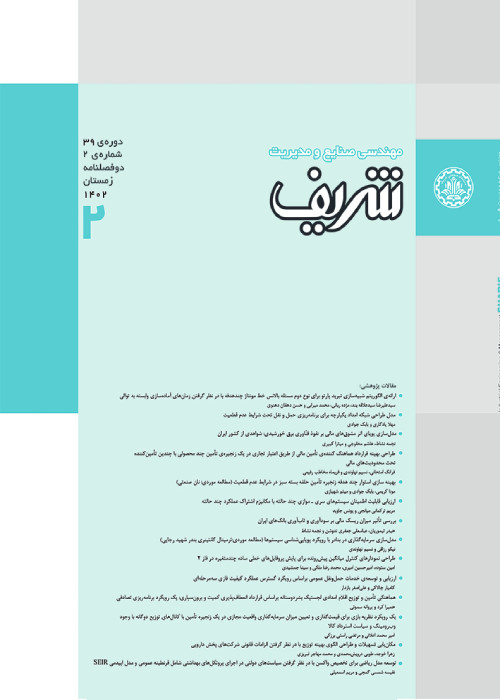DEVELOPING AN INTEGRATED MODEL FOR PRICING AND INVENTORY CONTROL OF PERISHABLE GOODS IN A TWO-STAGE SUPPLY CHAIN: A CASE STUDY OF GREEN MORTAR
In this paper, the problem of simultaneous production planning, inventory control, transportation, and pricing of perishable goods (with limited lifetime) in a twostage supply chain is investigated. Extensive research has examined each of the important supply chain subproblems, including production and inventory planning, distribution and transportation planning, and pricing, separately. On the other hand, the global optimum solution can be achieved when these sub-problems are solved simultaneously and in the form of an integrated model. However, less research has focused on integrating these decisions. There are also many research papers that assuming inventory items can be stored inde nitely to meet future demands. While there are certain types of products that either decay or become obsolete over time and, as a result, become unused. Perishable goods include food, vegetables, human blood, photographic lms, etc. which have a maximum shelf life to use. If the product is perishable, then there will be more need for integrated decision-making. Another important issue to consider is the uncertainty of the available data. In other words, the parameters in uencing these decisions are not deterministic and this uncertainty must be controlled to minimize the possibility of losses associated with the decisions. A non-deterministic multi-period optimization model, in which demand uncertainty depends on the product price and the remaining periods, is proposed to solve the problem. In the proposed model, robust possibility planning is used to deal with uncertainty. To validate the proposed model and solution approach, data from a case study (taken from Patron Company, which produces green mortar and is used in the steel industry) were used. The results of computational experiments show that by applying the proposed approach while making integrated decision-making, supply chain costs can be reduced by an average of 16%. Also, by comparing the proposed robust possibility approach with the nominal approach in uncertainty control, it is observed that the maximum and average deviations from optimality are reduced by 46% and 11%, respectively.
- حق عضویت دریافتی صرف حمایت از نشریات عضو و نگهداری، تکمیل و توسعه مگیران میشود.
- پرداخت حق اشتراک و دانلود مقالات اجازه بازنشر آن در سایر رسانههای چاپی و دیجیتال را به کاربر نمیدهد.


